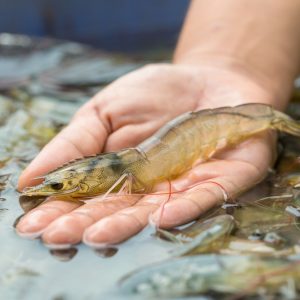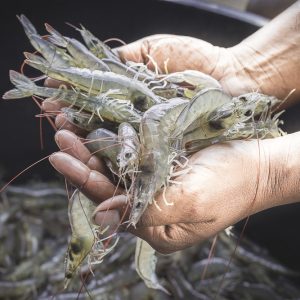
As the world is gripping in fear of COVID-19, struggling to make sense of the virus or it’s spread for the past six months, Vietnam was one of the first few countries to have the situation under control. Experts suggest that the panic reaction that the nation had come in handy in fighting the pandemic. COVID-19 cases across the world stand at an alarming 6.19 million and have claimed over 376K lives. Every country is on a standstill as the deaths, and positive cases only seem to be increasing.
However, with no news cases of 328 cases reported of whom 293 have recovered and no deaths, the country is setting an example for the rest of the world to follow! But that joy seems to be short-lived as Vietnam seems to have a new problem to battle! There’s a new virus that is spreading like wild-fire in the country. As fear grips Vietnam, here’s all you need to know about the DIV1 virus.
What Is DIV1 Virus?
Shrimp hemocyte iridescent virus (SHIV) is the name of the disease that’s gripping the Peninsula. SHIV or DIV1 or the Decapod iridescent virus 1 is a virus that falls under the category of Decapodiridovirus. The double-stranded DNA genome virus has its origin in the shrimps. It is spreading and infecting shrimp tanks across the country over the past few months. And thus causing massive losses to shrimp farmers.
Origin

This is not the first occurrence of the DIV1 virus. The first appearance of the DIV1 was in the year 2014 in China, and this time around, it’s the Guangdong Province that’s being the hotspot for the spread.
The early parts of February 2020 saw a rise in the number of infections in the shrimp around the Pearl River Delta in the Guangdong province. Around 17% of the 207 shrimps from the sample had DIV1 infection.
This pathogen is a grave threat to the freshwater polyculture. It is fast spreading in the giant freshwater prawn, which is a popular species in countries like Malaysia, Thailand, Vietnam, Bangladesh, Cambodia, Sri Lanka, Myanmar, and the Philippines.
The numbers are scaring the shrimp farmers as this is far higher than the DIV1 positive tests from 2018 and before. Research suggests that there’s not much that a farmer could do once a shrimp pond catches the infection. That’s because the virus soon spreads to the nearby water bodies too.
Symptoms of DIV1

While the shrimps with the infection, show a few common symptoms, there are a few symptomatic ones too. Here are a few common symptoms to watch out for in shrimps.
Signs to watch out for include, chronic lethargy, cessation of feeding, the dead shrimp sinking to the bottom of the pond, and a sudden increase in the deaths of shrimps in the postlarvae phase and the sub-adult phase. If any of these happen in your pond or tank, get a DIV1 check done immediately.
Besides these, you should also watch out for severe pathological signs. This includes an empty gut, softer shells, mutilated antennas, heads turning whitish, or a pale yellow with pale atrophied hepatopancreas. A slight reddishness around one-third the body of the effect shrimp is another warning sign too.
The Possible Good News
While the virus is fatal for the shrimps, it does not affect humans. And that means this will not be another zoonotic disease like the COVID-19 that’s wreaking havoc around the world. However, that might not be the reason to relax. Given the situation of a global economic crisis like now, this could do more harm than you would like to believe. So, be on a watch out, read the updates on how the virus takes a turn.
According to experts, a lack of biosecurity in the farms is one of the major reasons for the spread of the virus. So make sure your shrimp tanks, lakes, and ponds are well-maintained. If you notice one or more of the symptoms or signs, do approach the authorities in your region for help. They should be able to test your shrimp and guide you on the way forward!
The year 2020 doesn’t seem to get any better. With one disaster after another striking the world, there’s an increasing amount of panic everywhere. One could only hope that this soon comes to an end, and things go back to normal again!





